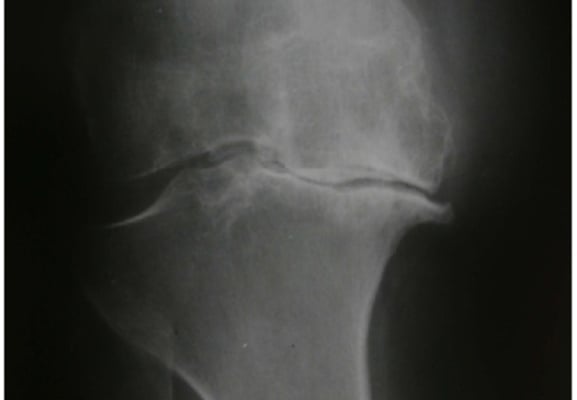What is Osteoarthritis:
Osteoarthritis is the most common form of arthritis and is one of the leading causes of pain and disability. It referrers to a clinical syndrome of joint pain accompanied by varying degrees of functional limitation and subsequent reduced quality of life.
Pain, reduced function and impacts on a person’s ability to carry out their day-to-day activities can be important consequences of osteoarthritis. This can lead to changes in a patient’s mood, sleep and coping abilities. Visible changes on an x-ray don’t always reflect the symptoms of osteoarthritis experienced by patients; minimal changes can be associated with a lot of pain, or modest structural changes to joints can occur with minimal accompanying symptoms. Contrary to popular belief, osteoarthritis is not linked to ageing and does not necessarily deteriorate. There are a number of management and treatment options (both pharmacological and non-pharmacological) which we will cover.
Osteoarthritis is a condition that results from a loss of cartilage with subsequent remodelling of adjacent bone and subsequent inflammation. It is some of these changes in the joint structure that can then be seen on x-ray.
It is a dynamic process that involves all joint tissues: the bones, cartilage, joint capsule, lubricating fluid and surrounding muscles.
Sometimes the altered joint structure compensates for the changes and does not cause pain; it is when the natural repair process cannot compensate enough that the joint starts to become painful.
The exact cause of the pain is not well understood, but it can come from the soft tissue as well as the joint. As mentioned, what we see on x-ray does not closely match how people feel or what they can do. This is due to the effect of peoples’ thought and beliefs and how and what they do, for example, people with osteoarthritis who are frightened to move and limit their activity suffer more pain and disability.
However, it is important to note that osteoarthritis has the potential for some repair – especially with the right advice and guidance. This means staying mobile, strengthening the muscles around the joint and weight management.
What causes osteoarthritis:
There is not thought to be one single cause of osteoarthritis, but various things are thought to be involved:
Important points to note:
Diagnosing Osteoarthritis:
Osteoarthritis can be diagnosed clinically without further investigations if a person is:
Be aware that atypical features, such as a history of trauma, prolonged morning joint-related stiffness, rapid worsening of symptoms or a hot swollen joint may indicate alternative or additional diagnosis. Important differential diagnosis include gout, other inflammatory arthritis (e.g. rheumatoid arthritis), septic arthritis and malignancy (bone pain).
It is important for patients to be aware their symptoms may fluctuate from day to day. Most people find they get flare ups from time to time with or without a trigger. It may be activities need to be modified for a while, but things will settle down and usual activities can be resumed. It is not a sign the condition is getting worse.
Managing Osteoarthritis :
As with many conditions affecting older people, there is no complete cure for osteoarthritis, but the problem can be managed and controlled.
Education & Self Management :
We offer accurate written and verbal information to all people with osteoarthritis to enhance understanding and counter misconceptions.
Patient self management interventions:
It is important self management programmes for people with osteoarthritis, either individually or in groups, emphasise the recommended core treatments: education, advice, access to information, exercises (muscle strength and aerobic training), weight loss if relevant.
Non-Pharmacological Management :
We advise people with osteoarthritis to exercise as a core treatment (NICE Guidance CG 177) irrespective of age, other health conditions, pain severity or disability.
Regular physical activity or exercise:
High impact sports are best avoided but pretty much anything else is fine:
It is important that some form of exercise is performed daily. Pain killers can be used to control the pain before initiating any form of exercise.
Weight Loss:
Electrotherapy:
Thermotherapy:
Aids & Devices:
Oral Pain Killers
Topical Pain Killers;
NSAIDS and highly selective COX-2 Inhibitors :
(NICE Guidance CG177)
Referral for consideration of Joint surgery:
Please refer to the OA knee pathway
If you have a patient that you feel requires joint surgery please refer onto the pathway where the physiotherapist will arrange a referral to an orthopaedic surgeon of the patients choice as well as help them in preparation for their forthcoming surgery
Patients are referred to surgery when their symptoms are having a significant impact on their lifestyle and non- surgical treatments , as suggested, have failed to improve pain and function.
The physiotherapist can ensure that the patient has a realistic expectation of what to expect from their surgery as well as discussing benefits and risks, what to expect post –surgery , recovery and rehabilitation, to ensure that the patient is able to make and informed decision regarding their care.
Patient specific factors such as age , sex, smoking, co-morbities and weight are not barriers to onward referral for surgery.
